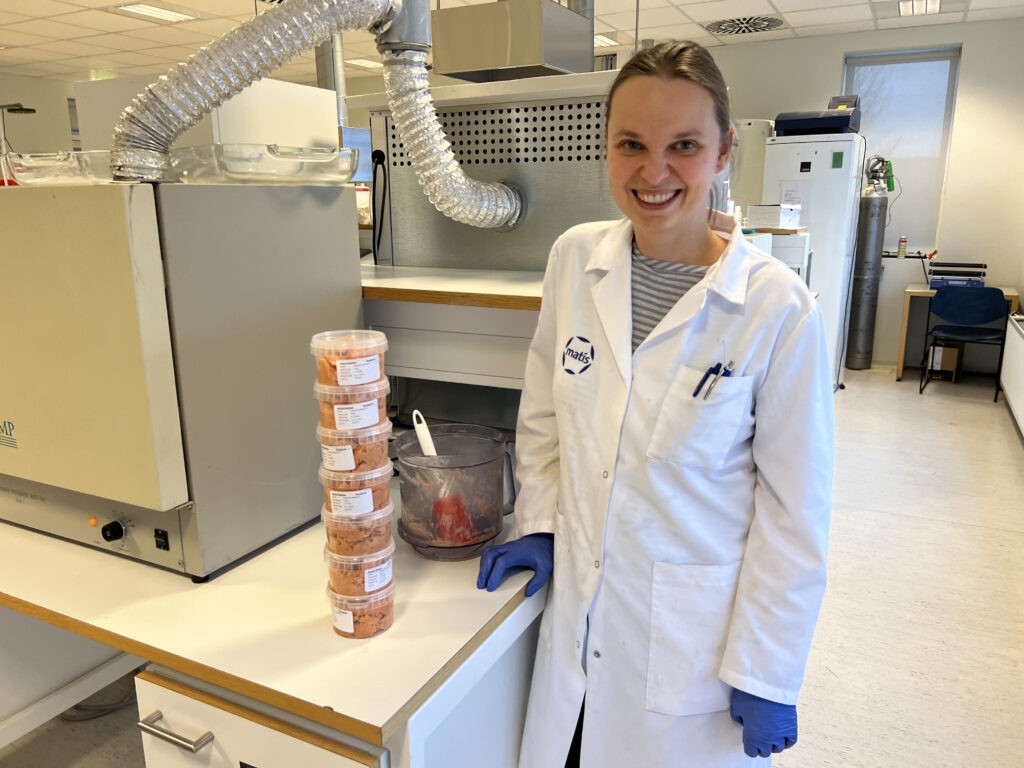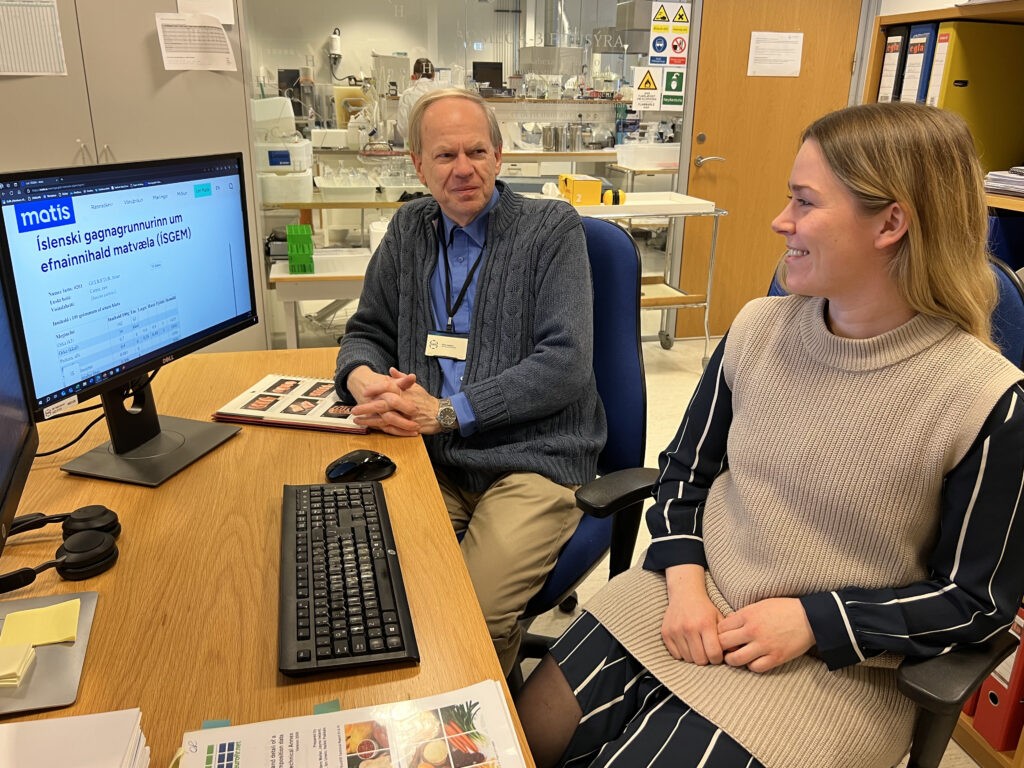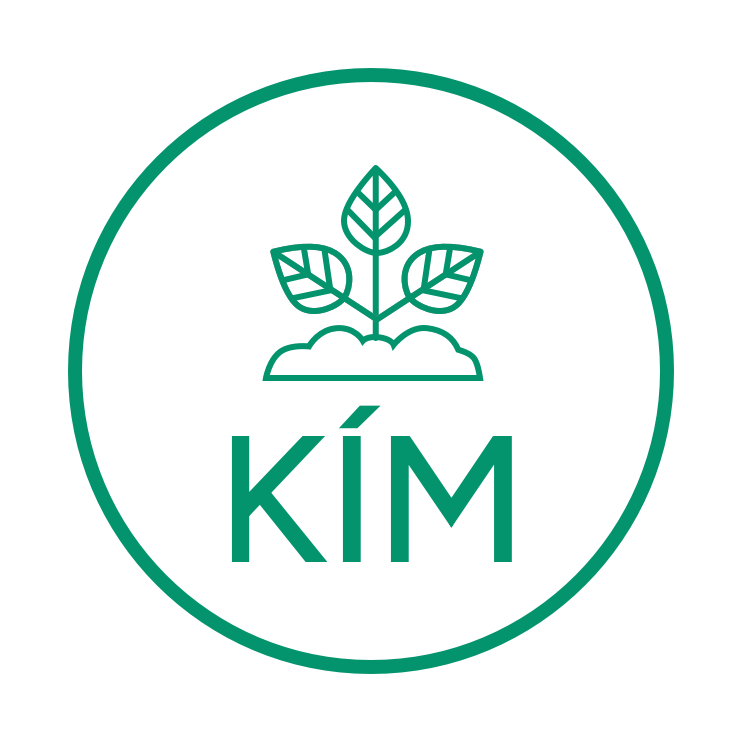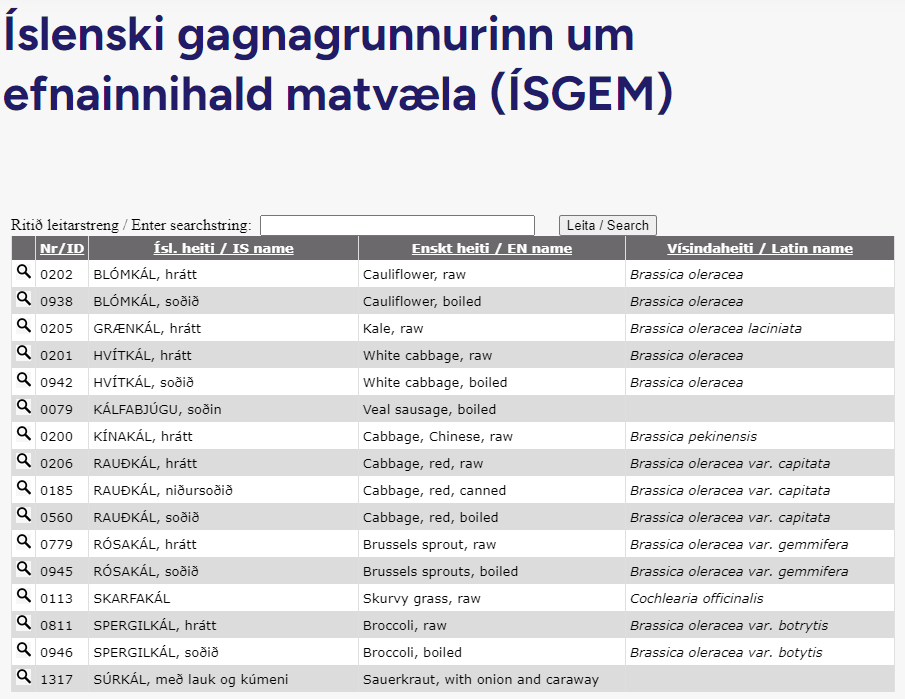The Icelandic database on the chemical content of food (ÍSGEM) is managed by Matís and á matis.is you can find information about the nutrients that have been registered in the database. It also contains explanations and information about the data and its origin. ÍSGEM has collected data on the main nutrients in many types of food that are on the market in Iceland. This is the only database of its kind in Iceland, as it is an official database for Iceland.
The role of databases that store information about the nutrients in our food is to provide users with reliable information about these substances. It is essential that this information is correct because many individuals rely on it for special needs or to maintain good health. Counselors must provide correct information to clients and patients, and company staff must provide correct information about the nutritional value of their products.
When registering data on nutrients in ÍSGEM, a special quality system is used to ensure that all information is correct. It must be ensured that the working methods have been of good quality, from sampling and chemical measurements to the presentation of the results. Information about the data is recorded accurately so that it is traceable to the original source.


Today, the internet, social media and artificial intelligence make it possible for us to easily access all kinds of information anywhere and anytime, but it is often not clear who the original source is. The information can be very detailed, but sometimes it is limited, misleading or outright wrong. Often, information is even presented to serve commercial goals or to follow fashion trends. When it comes to nutrients and health, it is essential to have access to verified, quality-assessed information, as can be found in ÍSGEM's open access.
There have been many users of ÍSGEM throughout history, but the database was created in 1987 at the Agricultural Research Institute, when measurements of nutrients and other substances in Icelandic foods were made for the first time.
The general public has downloaded information there, especially those who need to pay attention to their diet for their health. Research staff in nutrition and nutrition consultants can also be mentioned. All Icelandic national dietary surveys have used ÍSGEM. People in food companies have also used this database for product development and nutritional value labeling.

The ÍSGEM database is one of Iceland's infrastructure. By its very nature, ÍSGEM needs to be updated regularly because the composition of foods changes, for example, due to environmental effects, changed feeding, changed recipes, and new results need to be added when new foods come on the market.
It is especially important to maintain up-to-date information in the database so that the people of the country can continue to easily access reliable and correct information that is reviewed by scientific personnel.
Research funds generally do not support infrastructure maintenance, but at Matís we primarily work for grants. Matís is also working on a service contract with the Ministry of Food, but it is expected that work on the ÍSGEM database will be part of the service contract from 2024.

Over the years, the database has been used in various projects in collaboration with various parties, as mentioned. The Food Foundation funded the project in 2022-2023 Nutrient data – Importance for public health and product development. In this project, a quality system for ÍSGEM was developed, a user manual was compiled and part of the data was updated. A recent project that was worked on at Matís in collaboration with Samtok small producers of food products/ Straight from the farm with a grant from the Food Fund involved the development of a web application that calculates the nutritional value of food based on a recipe. It is a web application that retrieves information from ÍSGEM, but it greatly facilitates the calculation of nutritional value. The web application can be accessed here.
It is hoped that in the coming years it will be possible to use ÍSGEM to disseminate information on the carbon footprint of food. The project Carbon footprint of Icelandic food (KÍM) which is carried out in collaboration with Matís, the Department of Nutrition at the University of Iceland and Efla Engineering Studio, was recently awarded a grant from the Food Fund. The aim of the project is to provide consumers, the government and stakeholders in Iceland with reliable, transparent and comparable information about the environmental impact of Icelandic food. One of the project's three main goals is to update the ÍSGEM database, which will then also publish the carbon footprint of Icelandic foods alongside nutritional information when the project ends.

The opportunities for the ÍSGEM database are many and exciting, as there is enormous value in having reliable information on the nutritional content of foods available to people and companies. The vision for the future is that ÍSGEM can become a comprehensive information source on food. It is important to ensure support for maintenance and additions, and it will be interesting to follow the progress of these issues in the coming seasons.

